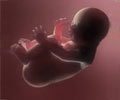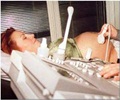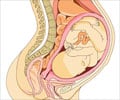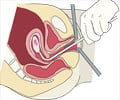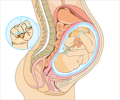About
A miscarriage or spontaneous abortion is the spontaneous loss of a fetus before the 20th week of pregnancy i.e. loss of pregnancy at a stage where the embryo cannot survive independently.

It occurs in about 15-20% of all recognized pregnancies. Almost 80% of the miscarriages occur during the first 12 weeks of pregnancy. It is the most common complication of early pregnancy.
The risk for miscarriage is higher in older age women and women with a history of previous miscarriages.
Recurrent or repeated miscarriage is defined as three or more abortion in a row. This is also known as habitual abortion. The causes of this are much the same as those for a single miscarriage, with chromosomal abnormalities being the most frequent cause for miscarriages. Vaginal bleeding and cramping are early warning signs of a spontaneous abortion.
An ultrasound exam (USG) is often used to determine whether there is a live fetus inside the uterus. With this test, the doctor tries to see the sac that surrounds the fetus. Fetal heartbeat can also be checked with the help of USG.
Types of abortion-
- Threatened abortion- The cervix tends to be dilated. A miscarriage will not necessarily happen, but there is a chance that it might.
- Inevitable abortion- The cervix is dilated and membranes that surround the fetus are broken. This miscarriage cannot be stopped.
- Missed abortion- The fetus is not alive but has not been passed out of the body. This is called a missed abortion.
- Incomplete abortion- If the patient passes a tissue, the doctor may suspect that a miscarriage has already occurred. If the tissue is available, the doctor may be able to examine it to see whether it contains any fetal tissue or is actually a clot or a piece of placenta.
Treatment depends on the type of abortion. If the USG reveals that miscarriage is complete and the uterus is empty, then no further treatment is usually required. In cases of missed or incomplete abortion, a dilatation and curettage is required to empty the contents of the uterus. However, the chance of a successful pregnancy after a spontaneous miscarriage is very good.







